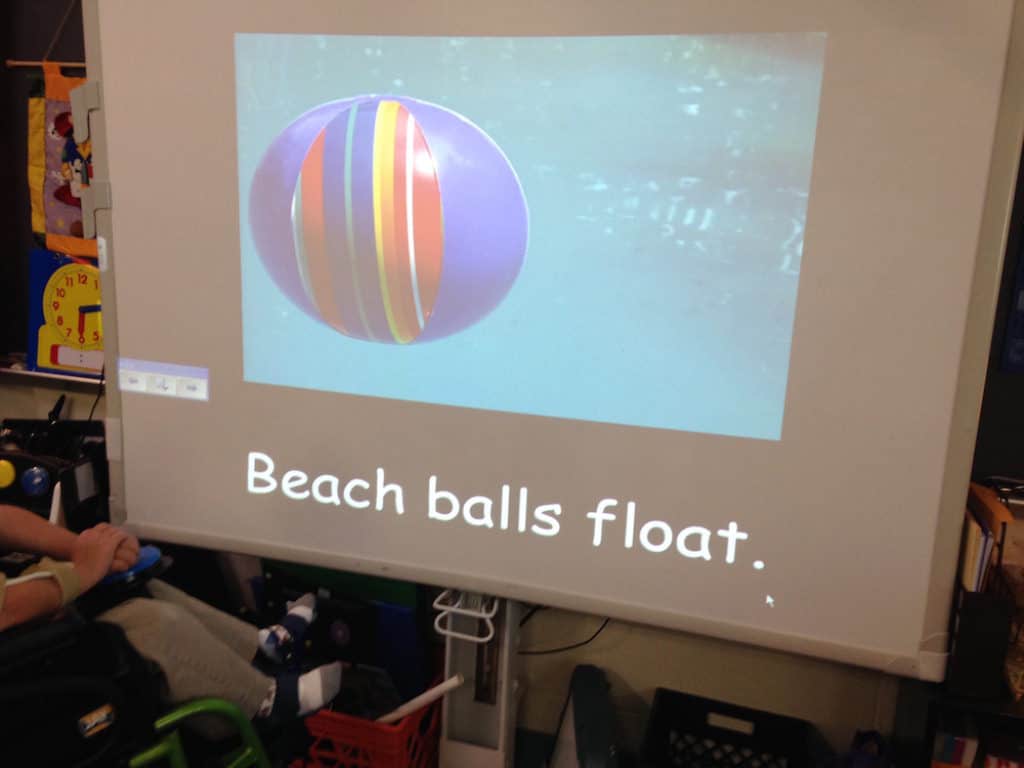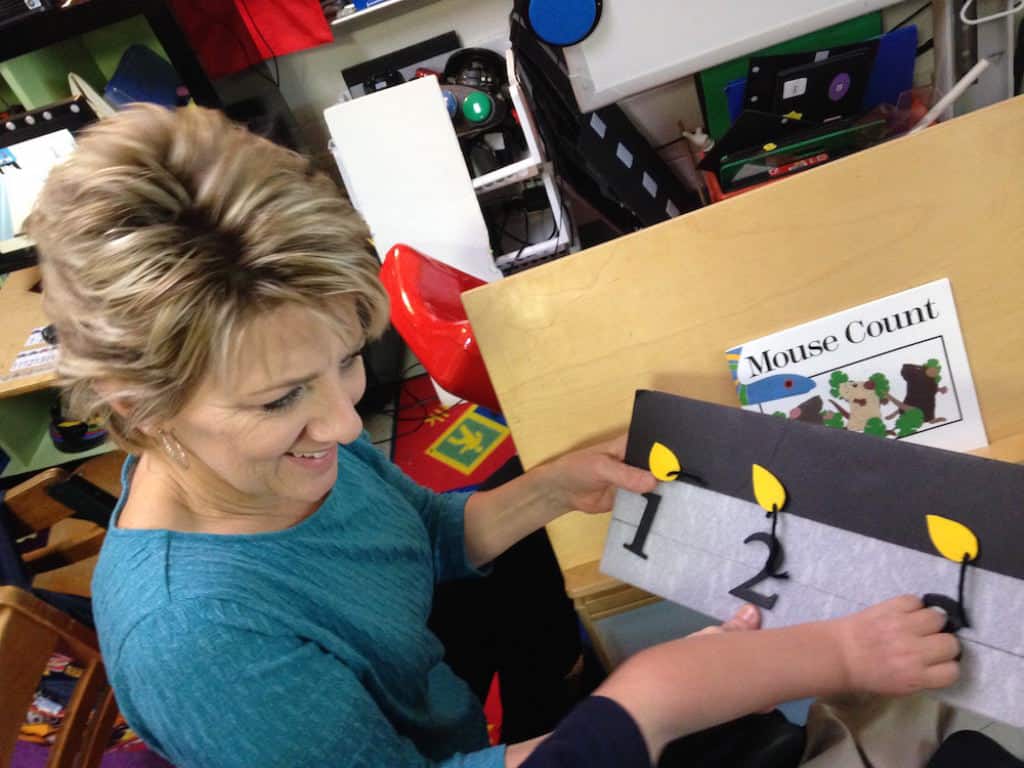Thirty years ago as a pre-service teacher, I would never have imagined that such positive, high expectations would now be implemented for students with multiple disabilities, including those with deaf/blindness. In those days, the primary instructional focus was sensory stimulation, which basically involved getting students to respond to auditory, visual, and tactual stimuli. With the Americans with Disabilities Education Act in 1990, the focus changed greatly to raise academic expectations for all students with special needs.
Now students with multiple disabilities are participating in daily literacy, math, science, and social studies lessons.
A federal grant was awarded about ten years ago to the North Carolina Department of Public Instruction (NC DPI) Exceptional Children’s Department that focused on literacy and communication for students with deaf-blindness and significant disabilities. As a result, my classroom became one of three literacy model teaching sites in North Carolina sponsored by the Center for Literacy and Disability Studies at the University of North Carolina at Chapel Hill.
Their belief is that every child has a right to communicate receptively and expressively through their daily involvement in literacy opportunities.
My teaching skills have also improved through knowledge of how to recognize ALL forms of communication made by students with significant disabilities.
This mindset led to monumental growth in access to the entire curriculum. The communication, whether it is through pictures, verbal output, voice output device, gestures, eye gaze, or sign language is based on the child’s individual needs. Students have met the challenges and it is wonderful to see how they have grown over the years. My teaching skills have also improved through knowledge of how to recognize ALL forms of communication made by students with significant disabilities. They are able to access reading and writing activities through adapted devices and assistive technology, including voice output devices, computers, and iPads.
In 2013, I was selected as a Kenan Fellow to focus on STEM curriculum for students with severe disabilities. The fellowship involved extensive background research on the North Carolina Common Core and Extended Content Standards while creating differentiated math, science, and literacy embedded lessons based on the standards. The lessons provided instructional methods based on the Universal Designs for Learning concepts.
For example, I created a lesson titled “A Solid Piece of Property” in which students were involved in activities to compare physical properties of objects. Then I created lesson-specific PowerPoint books that students were able to access independently using adapted switches.


They also explored and compared objects based on attributes while working cooperatively with students from the general education setting. Examples were provided on how to address multiple means of representation, engagement, and expression. Each lesson also gave ideas for inclusive opportunities with general education peers.
After implementing the lessons in my classroom, they were shared with other teachers at the NC DPI Exceptional Children’s Conference the following school year. This summer, I was excited to share information with other Kenan Fellows on how to differentiate math and science lessons for students with special needs in the general education classroom.
East Carolina University (ECU) has been a strong advocate for students with significant disabilities and deaf/blindness through their research, pre-service teacher education, in-service teacher support, and online MAST modules. My students were recently involved in adapted curriculum math research. The purpose was to measure growth while teaching early numeracy skills using assistive technology and adapted materials with students with multiple disabilities.


Prior to implementing the lessons, we adapted materials and programmed voice output devices to ensure individualized communication and material access. All students involved showed growth as a result of the adaptations for curriculum access, especially when given appropriate means of communicating during the lessons.
For the past five years, I have been a part of the ECU State Deaf/Blind Teacher Support Program. This summer, we created online math and science instruction modules to assist pre-service and in-service teachers of students with deaf-blindness and significant disabilities. The modules address teaching pedagogy as well specific lessons and adaptation ideas. The modules will be available in the near future through the ECU MAST website.
As a member of the program, I work together with other ECU faculty to provide workshops and one-on-one assistance to teachers and related service personnel through the state. We are sharing methods on how to create embedded math, science, and communication lessons for students with multiple handicaps. This information was recently presented to teachers and speech therapists from all over the United States, Canada, and British Columbia.
All of my experiences in the special education field have shown me that EVERY child can learn.
Everyone can communicate and achieve when provided the opportunity. It is our responsibility to figure out how each student can excel to the best of their ability. When we provide students with the adaptations needed to succeed, the sky is the limit!






